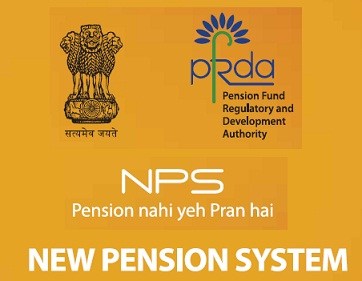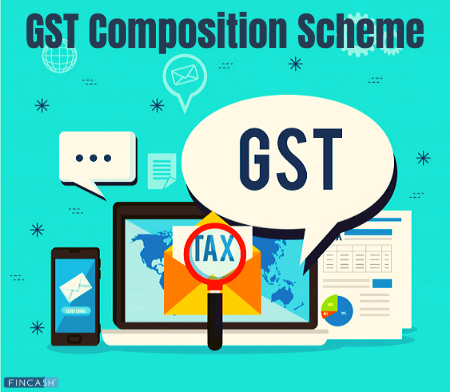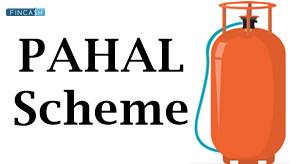What is NPS (National Pension Scheme)?
The National Pension System (NPS) is a government-backed retirement savings scheme regulated by the Pension Fund Regulatory and Development Authority (PFRDA). Introduced in 2004, NPS aims to provide a flexible,

long-term retirement solution for all Indian citizens, including salaried employees, self-employed individuals, and gig workers.
What Is NPS?
NPS is a voluntary, defined-contribution pension scheme allowing subscribers to invest in equities, corporate Bonds, government securities, and alternative assets. It encourages long-term savings and ensures steady income post-retirement.
Key Features:
Open to All - Indian citizens aged 18–70
Two Account Types -
Tier I - Mandatory for government employees; tax benefits apply; withdrawal restrictions.
Tier II - Voluntary; flexible withdrawals; Tier I account mandatory.
Investment Options - Active Choice (self-managed) or Auto Choice (life-cycle fund).
Tax Benefits - Deductions under Sections 80C, 80CCD(1B), 80CCD(2).
Talk to our investment specialist
How to Invest in NPS Scheme?
You can invest in NPS through Points of Presence (POP). The contributions can be allocated across three types of asset classes:
- Asset Class E – Investment in equity market instruments (stocks). Higher risk, higher potential returns.
- Asset Class C – Investment in corporate bonds and other fixed-income instruments apart from government securities.
- Asset Class G – Investment in Government Securities (safe and stable returns).
Subscribers can choose their Asset Allocation either through Active Choice (self-managed) or Auto Choice (life-cycle fund based on age).
NPS in 2025: Latest Updates
1. 100% Equity Option for Non-Government Subscribers
From October 1, 2025, non-government subscribers can allocate up to 100% in equities, ideal for younger investors seeking higher long-term returns.
2. NPS Vatsalya Scheme
Targets children and young adults. At least 80% of accumulated pension wealth must be used to purchase an annuity upon exit.
3. Revised CRA Maintenance Charges
CRA charges updated from October 2025, varying based on government/private subscriber and online/offline accounts.
Tax Benefits Under NPS
- Section 80CCD(1) - Deduction up to 10% of salary (14% for Central Govt employees) for employer contributions.
- Section 80CCD(1B) - Additional ₹50,000 deduction over Section 80C limit.
- Section 80CCD(2) - Employer contribution up to 10% of salary deductible.
NPS Withdrawal Rules
| Type | Details |
|---|---|
| Premature Withdrawal (<60 yrs) | Up to 20% lump sum tax-free; 80% must buy annuity (taxable) |
| At Retirement (≥60 yrs) | Up to 60% lump sum tax-free; 40% for annuity |
| Partial Withdrawal | Up to 25% of own contributions for education, marriage, illness |
Special Withdrawal Rules
Full Withdrawal for Small Corpus - If the total NPS balance is less than ₹2 lakh at retirement or age 60, subscribers (except Swavalamban users) can withdraw the entire amount at once.
Death of Subscriber - The accumulated wealth is paid to the legal nominee. For government employees, purchasing an annuity is mandatory.
Historical Notes - Earlier, partial withdrawals up to 25% of contributions were tax-free as per Budget 2017–18. From April 1, 2019, non-government subscribers can also enjoy tax-free withdrawals up to 40% of their maturity corpus.
NPS Annuity Rates (2025)
- Range - 5.5%–7.5% per annum.
- Example - ₹1 lakh in annuity → ₹5,500–7,500/year pension before tax.
Corpus Growth: Real-Life Examples
| Age | Monthly Contribution | Years | Expected Corpus @ 9% CAGR | Annuity (60%) | Lump Sum (40%) |
|---|---|---|---|---|---|
| 25 | ₹5,000 | 35 | ₹1.62 crore | ₹97.2 lakh | ₹64.8 lakh |
| 30 | ₹5,000 | 30 | ₹1.50 crore | ₹90 lakh | ₹60 lakh |
| 35 | ₹5,000 | 25 | ₹1.18 crore | ₹70.8 lakh | ₹47.2 lakh |
Tip - Earlier you start, more your corpus benefits from compounding.
Use retirement calculator given below for better understanding-
Know Your Monthly SIP Amount
Tier I vs Tier II vs Annuity: Quick Comparison
| Feature | Tier I | Tier II | Annuity |
|---|---|---|---|
| Withdrawal | Limited | Flexible | Monthly pension only |
| Tax Benefit | Yes | No | N/A |
| Liquidity | Low | High | Very low |
| Purpose | Retirement savings | Savings/contingencies | Regular pension |
NPS vs Other Retirement Options
| Feature | NPS | PPF | EPF |
|---|---|---|---|
| Return | 8–10% | 7–7.5% | 8–9% |
| Tax Benefit | ₹2 lakh max | ₹1.5 lakh | ₹1.5 lakh |
| Liquidity | Moderate | Low | Low |
| Annuity Option | Yes | No | No |
| Ideal For | Long-term | Risk-averse | Employees |
Investment Strategies for NPS
Investing in NPS is not just about putting money aside—it’s about choosing the right strategy based on your risk profile and retirement goals.
Active Choice vs Auto Choice
Active Choice -
You decide the percentage allocation across Equity (E), Corporate Bonds (C), and Government Securities (G).
Offers flexibility and higher potential returns, but requires regular monitoring and understanding of market risks.
Auto Choice (Life-Cycle Fund) -
Asset allocation automatically adjusts with age.
Higher equity allocation in early years, gradually shifting to safer debt and government securities as you near retirement.
Ideal for investors who prefer a hands-off approach.
Switching Pension Fund Managers (PFMs)
- NPS allows switching your PFM once a year without any charges.
- You can evaluate fund performance annually and move to a better-performing fund, helping improve long-term returns.
Rebalancing Asset Allocation
- Even if you choose Active Choice, it’s important to rebalance periodically to maintain the desired risk profile.
- For example, if equity grows disproportionately, adjust your allocation back to your preferred target.
Tips Based on Risk Profile
| Risk Profile | Suggested Allocation (E/C/G) | Investment Approach |
|---|---|---|
| Conservative | 20/50/30 | More debt; stable returns; lower risk |
| Moderate | 50/30/20 | Balanced equity and debt; moderate risk |
| Aggressive | 75–100/15–25/0–10 | High equity; higher potential returns; higher risk |
Tip: Younger investors can afford higher equity exposure for compounding, while those closer to retirement should shift to safer debt instruments.
Tax Planning Tips Using NPS
NPS is not just a retirement tool—it’s also a powerful tax-saving instrument when used correctly alongside other investments under Section 80C.
Complementing 80C Investments
- Section 80C allows deductions up to ₹1.5 lakh per year.
- NPS offers an additional deduction of ₹50,000 under Section 80CCD(1B).
- This means you can save taxes on both 80C and 80CCD(1B) simultaneously.
Sample Tax Savings Calculation
| Investor Type | Annual Contribution | Tax Benefit (80C + 80CCD(1B)) | Effective Tax Saved |
|---|---|---|---|
| Salaried Employee | ₹2,00,000 | ₹1,50,000 (80C) + ₹50,000 (80CCD) | ₹52,500 @ 30% slab |
| Self-Employed | ₹2,00,000 | ₹1,50,000 (80C) + ₹50,000 (80CCD) | ₹52,500 @ 30% slab |
Assuming 30% tax slab. Actual savings depend on individual income and exemptions.
Strategic Tips -
- Maximise NPS contributions early in the financial year to benefit from compounding and tax deduction.
- Use Tier II account for additional liquidity, while still maintaining Tier I for tax benefits.
- Combine with PPF, ELSS, or EPF for diversified tax-saving strategy.
FAQs
1. Can self-employed individuals open NPS?
A: Yes, NPS is open to all Indian citizens, including self-employed individuals.
2. Minimum Investment?
A: ₹6,000/year.
3. Can I switch Pension Fund Manager (PFM)?
A: Yes, once per year at no cost.
4. Is NPS better than PPF?
A: NPS has higher growth potential; PPF is safer with fixed returns.
All efforts have been made to ensure the information provided here is accurate. However, no guarantees are made regarding correctness of data. Please verify with scheme information document before making any investment.












